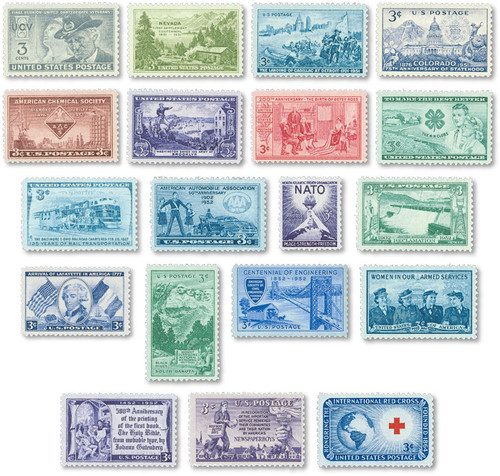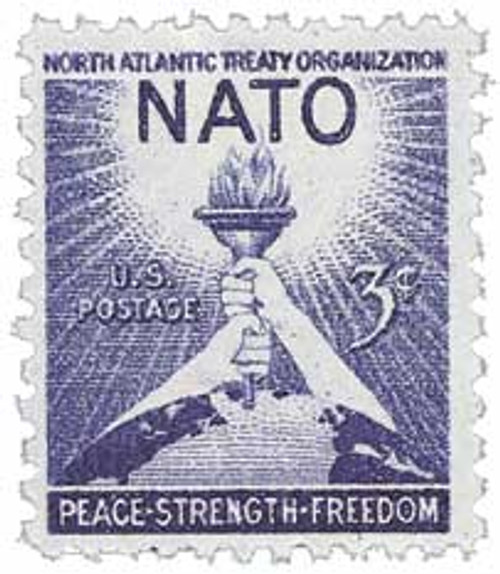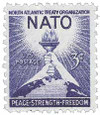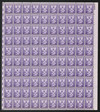
1952 3¢ NATO
# 1008 - 1952 3¢ NATO
$0.35 - $36.50
U.S. #1008
3¢ NATO
3¢ NATO
Issue Date: April 4, 1952
City: Washington, D.C.
Quantity: 2,899,580,000
Printed by: Bureau of Engraving and Printing
Printing Method: Rotary Press
Perforations: 11 x 10½
Color: Deep violet
City: Washington, D.C.
Quantity: 2,899,580,000
Printed by: Bureau of Engraving and Printing
Printing Method: Rotary Press
Perforations: 11 x 10½
Color: Deep violet
U.S. #1008 was issued to commemorate the 3rd anniversary of the signing of the North Atlantic Treaty. In the center of the stamp, a torch represents freedom and peace. The hands holding the torch symbolize the strength and unity of the North Atlantic Treaty Organization members.
U.S. #1008
3¢ NATO
3¢ NATO
Issue Date: April 4, 1952
City: Washington, D.C.
Quantity: 2,899,580,000
Printed by: Bureau of Engraving and Printing
Printing Method: Rotary Press
Perforations: 11 x 10½
Color: Deep violet
City: Washington, D.C.
Quantity: 2,899,580,000
Printed by: Bureau of Engraving and Printing
Printing Method: Rotary Press
Perforations: 11 x 10½
Color: Deep violet
U.S. #1008 was issued to commemorate the 3rd anniversary of the signing of the North Atlantic Treaty. In the center of the stamp, a torch represents freedom and peace. The hands holding the torch symbolize the strength and unity of the North Atlantic Treaty Organization members.









